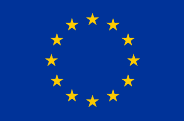
Safe non-food consumer Products in the EU and China
Cycle and climbing helmets are products which offer the wearer head protection against mechanical impact caused by falling or ejected objects, and collisions with an obstacle. They may also provide protection against other risks like cold, UV radiation, low visibility, etc.
This factsheet does not cover helmets used in other activities that may require protection against other risks.
As such products are designed to offer protection, they are regulated under the Regulation (EU) 2016/425 on personal protective equipment.
Helmets for use by motorcyclists on public roads are regulated under different legislation in Europe and as such are outside the scope of this fact sheet.
This is a list of examples of common risks. However, the manufacturer has to carry out an assessment of cycle and climbing helmets that covers all relevant risks that may be associated with the product and actions taken to mitigate these risks where possible. A general definition of risk and its relationship to hazards can be found in the factsheet on Risk management.
Since these products are worn on the head to protect against impacts, the first risk to note is the potential for products to offer insufficient impact protection through:
In addition, some products may present a risk to the wearer just by being worn, and these are independent of the protective mechanism. The most common risks are:
Specific examples of measures taken against dangerous face masks offered for sale in the European Union are available on the Safety Gate website. Type ‘helmets’ into the free text search box (but without the quotation marks). A better understanding of mistakes made in the safety assessment of protective helmets, or their manufacture can help avoid their repetition.
These products are regulated mainly by the Personal Protective Equipment Regulation (EU) 2016/425. The legislation lays down the requirements for the design and manufacture of PPE that are necessary to allow these products to be sold and used in the EU market.
Other guidance is also available:
“Harmonised standards” exist in the EU for protective helmets. A product claiming a particular level of protection and complying with these standards is presumed to be in conformity with the essential health and safety requirements set out in the PPE Regulation if the standards are referenced in the Official Journal of the European Union (OJEU). Further information on, and the list of harmonised standards for PPE is available from here.
Note: The full text of European standards can only be purchased from a national standardisation body. The following site of CEN (the European standardisation organisation) provides links to the national standardisations bodies’ websites. In addition, the China Standards Information Services Network can be used to access European standards.
The following harmonised standards can be applied to protective helmets for cycling and climbing:
EN 1078:2012+A1:2012
This standard specifies requirements and test methods for helmets worn by pedal cyclists, skateboards and roller skates.
EN 12492:2012
This standard specifies safety requirements and test methods for helmets used by mountaineers.
While manufacturer’s need to familiarise themselves with all the laws which apply to their specific products, the following summarises some further key applicable laws:
The following are obligatory:
In addition, the following information must be provided with the PPE:
The information in points (i), (j), (k) and (l) need not accompany the product if it is supplied with a copy of the EU declaration of conformity.
To ensure safety of protective helmets, there is also a range of general requirements to be fulfilled. These are explained in the following factsheets and need to be read in conjunction with this factsheet:
You may also visit the SPEAC ACADEMY to learn more about the EU Safety requirements.
The provided information was updated in 2022. Please note that some of the provided information could change during possible subsequent revisions of legislation, standards, and guidance documents. For any updates of official information on the EU product safety rules, please follow the Link to the webpage of the European Commission.
This document was produced with the financial support of the European Union. Its contents are the sole responsibility of SPEAC project and do not necessarily reflect the views of the European Union.

This website was created and maintained with the financial support of the European Union. Its contents are the sole responsibility of SPEAC project and do not necessarily reflect the views of the European Union.